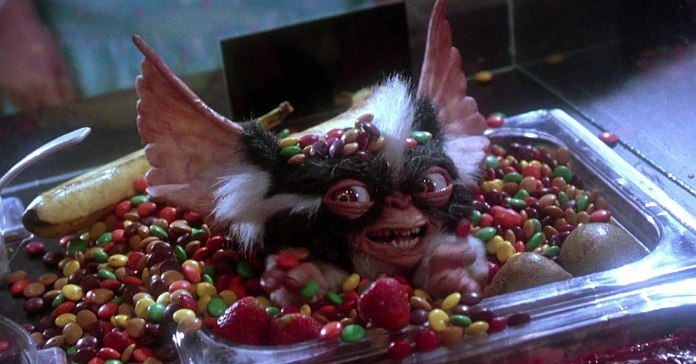
Creating a follow-up to a timeless movie can be quite a daring endeavor. We all know that while some sequels, like The Godfather Part II, hit the mark and leave us in awe, others, like Blues Brothers 2000, fall flat on their faces. And let’s not forget that for every thrilling Aliens, there’s a lackluster Caddyshack II. The audience enters with sky-high expectations, so if the sequel doesn’t measure up, the disappointment can be truly disheartening.
But there exists a hidden gem among sequels, often overshadowed and underestimated – the underdogs. These sequels may have initially let people down, but with the passage of time, they’ve come into their own. They didn’t receive the same hype as the original or were unfairly compared to their predecessors. Nevertheless, they deserve a second chance. Perhaps they won’t reach the same legendary status as the classics, but that doesn’t mean they lack a certain charm or unique appeal.
1. Doctor Sleep

Stanley Kubrick’s The Shining is often hailed as one of the greatest horror films ever made, despite Stephen King, the author of the original book, openly expressing his dislike for it. Jack Nicholson’s portrayal of Jack Torrance, a writer turned caretaker at a remote hotel during the winter, is nothing short of legendary. As Jack’s grip on reality starts to slip, his wife Wendy and young son Danny are left in a state of terror. One of the main reasons why The Shining captivates audiences is the chilling atmosphere Kubrick masterfully creates. It’s an unsettling experience that lingers with you.
Fast forward to the present, and Stephen King writes a sequel to The Shining called Doctor Sleep, which is then adapted for the screen by director Mike Flanagan. Ewan McGregor takes on the role of adult Danny, who has been deeply scarred by his haunting past at the hotel. As the story unfolds, it becomes apparent that Danny’s supernatural abilities have grown even stronger. These abilities prove invaluable when he discovers a cult that preys on children with similar powers, aiming to steal their “shine.” Alongside a standout performance by Rebecca Ferguson as the cult leader, Doctor Sleep explores profound themes of trauma and child exploitation. While it may not have garnered the same cultural impact as its predecessor, Doctor Sleep is undeniably a horror film that is both intelligent and spine-chilling.
2. T2: Trainspotting

Trainspotting is a gripping story that delves into the world of addiction and the struggles of recovery. Set in Scotland, it follows a group of friends who are deeply immersed in heroin addiction, leading their lives on a downward spiral. Ewan McGregor takes on the central role of Mark Renton, a character who goes to extreme lengths to satisfy his addiction, including diving into a toilet to retrieve his much-needed suppositories. The film skillfully explores the dark corners of their lives, but director Danny Boyle injects it with energy and style that keeps you hooked, despite the bleak subject matter.
T2: Trainspotting arrived in theaters with little fanfare, quickly coming and going. In this sequel, we find a now middle-aged Mark returning home and reconnecting with his old friends. Mark is grappling with a mid-life crisis, having recently gone through a divorce and experienced a heart attack. The others are still caught up in their own troubles, ranging from ongoing substance abuse to being behind bars. As they reunite, old tensions resurface, pulling Mark back into the dysfunction he had managed to escape. T2 may not possess the same frenetic energy as its predecessor, but it doesn’t need to. It focuses on making amends for the past rather than the thrill of drug use before addiction takes hold. By portraying Mark at a different phase of his life, the film becomes a poignant sequel to the classic, reminding us that addiction is a lifelong battle.
3. Gremlins 2: The New Batch

Gremlins is not just a classic film, it has also become a holiday favorite for those with a wicked taste. The story revolves around Billy, a teenager who receives a mogwai as a Christmas present. This cute and seemingly harmless creature, named Gizmo, ends up multiplying into nastier versions due to Billy’s disregard for the rules. The film is a delightfully fun creature feature with a twisted sense of humor and plenty of amusing mogwai antics. It turned out to be one of the biggest box office hits in 1984.
Six years later, Gremlins 2: The New Batch was released, taking the mischievous mogwai to a New York skyscraper owned by billionaire Daniel Clamp. This new setting allowed the creatures to wreak havoc on a whole new level. Director Joe Dante intentionally gave the sequel a different tone from the original, infusing it with cartoonish slapstick humor and a touch of self-awareness. There was even a memorable scene in theaters where the mogwai seemed to take control of the projection booth, burning the film and replacing the reel (a different scene was used for the home video release). While it didn’t meet the expectations of those looking for a traditional follow-up, the anarchic spirit of Gremlins 2: The New Batch is highly entertaining if you can detach yourself from its predecessor.
4. Blade Runner 2049
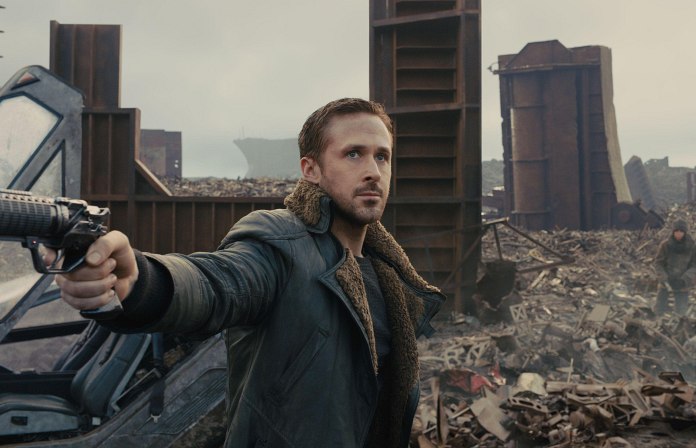
Blade Runner is a movie that didn’t make a huge splash in theaters, but it has gained a well-deserved classic status through home video and cable viewings. To truly appreciate its nuances, it’s worth watching more than once. Harrison Ford takes on the role of Rick Deckard, a hunter of “replicants” – human-like beings that aren’t actually human. The film’s visual style mixes grunginess with surprising bursts of color, offering a captivating glimpse into a future where advanced technology doesn’t necessarily mean a better world. Rutger Hauer’s portrayal of Roy Batty, the film’s antagonist, is truly outstanding. Blade Runner is the type of movie that continues to reveal new layers with each viewing.
When it came to its sequel, Blade Runner 2049, the filmmakers faced a significant challenge. Ryan Gosling steps into the shoes of “K,” a blade runner assigned with the task of “retiring” a highly significant replicant. This job proves to be quite difficult, leading him to eventually team up with Deckard, who has chosen to isolate himself from society. Directed by Denis Villeneuve, the film showcases mind-blowing visuals and special effects that transport viewers into an entirely new world. What’s even more impressive is that Blade Runner 2049 builds upon the ideas and themes introduced in the original, delving even deeper into the potential impact of replicants on humanity.
5. The Color of Money
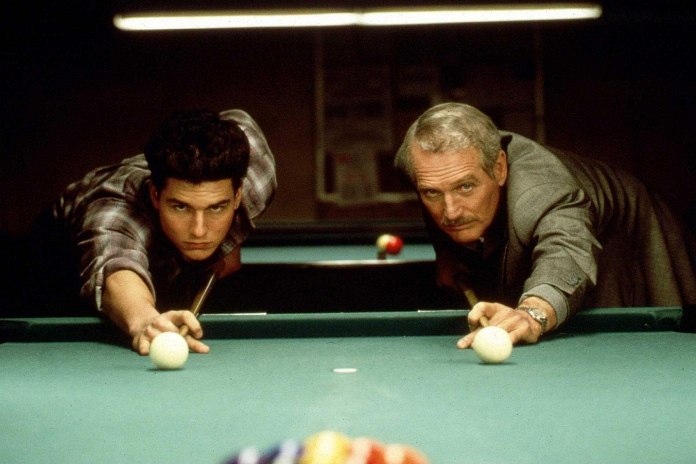
In 1961’s The Hustler, Paul Newman took on the role of “Fast” Eddie Felsen, a young pool player determined to establish himself in the professional billiards world. His ultimate goal? Defeating the reigning champion, Minnesota Fats, played by Jackie Gleason. Directed by Robert Rossen, the film not only tells an exciting underdog story but also delves into the psyche of a fiercely competitive individual. Newman’s performance was so impressive that he earned a well-deserved Oscar nomination for Best Actor.
Fast forward twenty-five years, and Newman finally clinched that coveted Oscar for his reprisal of Felsen in Martin Scorsese’s The Color of Money. This time around, the tables have turned. Newman’s character is now the seasoned veteran, while Tom Cruise portrays Vincent Lauria, the young prodigy. Together, they embark on a series of billiards-related scams. However, Vincent’s flashy showmanship puts their operation in jeopardy, causing Felsen to part ways with him. Naturally, their paths intersect again, leading to a thrilling showdown.
The Color of Money boasts exceptional performances from both Newman and Cruise, and Scorsese’s direction infuses the film with a fast-paced, electrifying style. It’s a rare sequel that can hold its own against the original, leaving viewers debating which film is truly superior.
6. Escape from L.A.
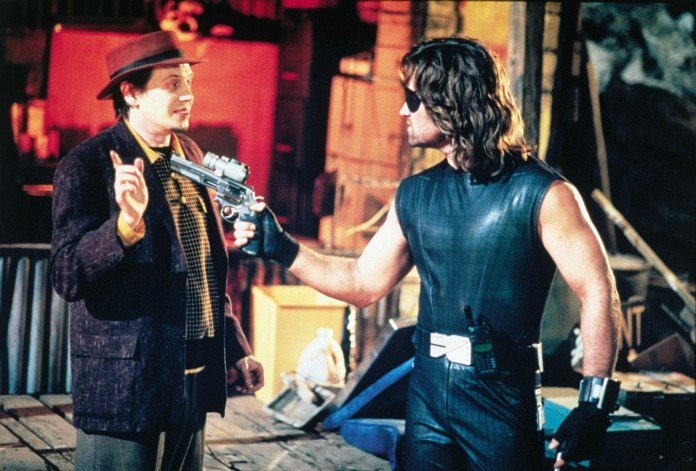
Kurt Russell takes on the role of Snake Plisskin, a former Special Forces criminal, in the action film Escape from New York. The story revolves around a unique proposition that he simply cannot refuse. The entire city of New York has been transformed into a massive prison, with Air Force One crashing right in the middle of it. Snake is offered his freedom if he can successfully infiltrate the prison and rescue the President of the United States. Director John Carpenter skillfully captures the gritty and grimy atmosphere, perfectly complementing the intentional B-movie thrills of the film.
Snake Plisskin makes a comeback in Escape from L.A., but this time the city of Los Angeles has undergone a dramatic transformation. It has been separated from the rest of the country due to a powerful earthquake. The President’s daughter seeks refuge in this isolated city, joining her boyfriend who is involved in a planned political rebellion. To make matters more intense, she possesses a detonator for a nuclear weapon. Snake’s mission is to retrieve her safely. Escape from L.A. maintains the B-movie thrills of its predecessor, but director John Carpenter injects a touch of humor into the mix. The film doesn’t take itself too seriously, which perhaps explains why it didn’t have a significant impact. Nevertheless, the exaggerated and over-the-top nature of the movie provides its own brand of enjoyable entertainment.
7. U.S. Marshals

The Fugitive” was a standout film from the ’90s that went beyond the trend of adapting old TV shows for the big screen. Director Andrew Davis skillfully crafted this movie, making it more than just a cash-grab. Harrison Ford delivers one of his finest performances as Richard Kimble, a doctor who becomes a fugitive after being wrongly accused of murdering his wife. Tommy Lee Jones won an Academy Award for his outstanding work as Sam Gerard, the Deputy U.S. Marshal relentlessly pursuing Kimble. This blockbuster hit even received a Best Picture nomination at the Oscars.
While it was highly unlikely that a sequel could live up to the original, especially without Ford’s presence, “U.S. Marshals” manages to avoid feeling like a typical sequel. The film takes the Gerard character and explores his role as the leader of a team of Marshals on the hunt for Mark Sheridan (played by Wesley Snipes), a fugitive wanted for homicide. As the story progresses, Gerard begins to question Sheridan’s guilt. Although “U.S. Marshals” lacks the tight pacing and strong characterization that made “The Fugitive” exceptional, it still stands as a decent movie in its own right. Jones delivers his usual impressive performance, as does Snipes, and the film provides enough action to keep audiences entertained for its two-hour runtime
8. Force 10 from Navarone
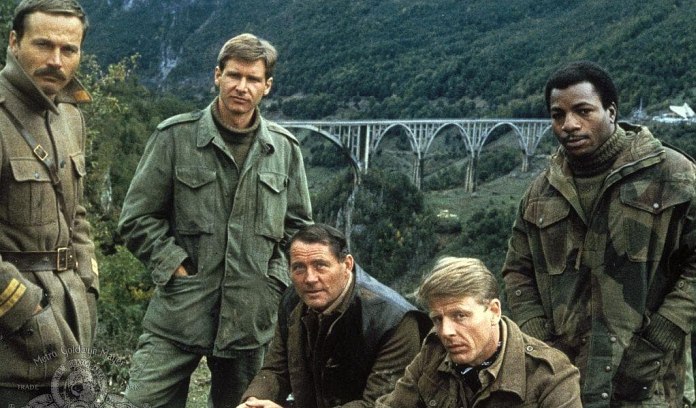
In 1961, The Guns of Navarone brought together an impressive cast including Gregory Peck, David Niven, Anthony Quinn, and Richard Harris. This film tells the story of American soldiers sent to a Greek island with the mission of destroying German guns and weakening their military. As tension and danger escalate during the mission, the soldiers must navigate both interpersonal conflicts and physical peril. The strength of the film lies in its well-developed characters, providing gripping interactions amongst the soldiers throughout their ordeal.
Jumping ahead to 1978, a belated sequel titled Force 10 from Navarone was released. Robert Shaw and Edward Fox step into the roles previously portrayed by Peck and Niven. After successfully completing their initial mission, they join an elite unit known as Force 10, led by Col. Barnsby, played by Harrison Ford. This film offers the added appeal of witnessing a young Harrison Ford, just a year after his rise to fame with Star Wars. Furthermore, the story delivers ample suspense and decent action sequences as the group hunts down a Nazi spy on the run.
9. 2010: The Year We Make Contact

Stanley Kubrick’s 2001: A Space Odyssey is a highly significant and influential science-fiction film that has captivated and entertained audiences for many years. Its story revolves around an astronaut, a mysterious black monolith, and an overly intelligent computer named HAL. With its impressive visual effects that still hold up today, the movie truly takes viewers on a captivating odyssey. It allows them to interpret its meaning for themselves, while also providing a satisfying conclusion that leaves you in awe.
The sequel, 2010: The Year We Make Contact, released in 1984, follows a group of Russian and American astronauts on their mission to Jupiter. Their goal is to uncover the fate of the characters from the original film. The main characters include astronaut Heywood Floyd, played by Roy Scheider, and HAL’s creator, R. Chandra, portrayed by Bob Balaban. It would be unrealistic to expect 2010 to match the heights of its predecessor, 2001. However, the sequel remains intriguing as it metaphorically explores the tense relationship between the United States and Russia. In this sense, the film stays true to the spirit of its predecessor, providing a thought-provoking adventure.
10. Psycho II

Alfred Hitchcock’s Psycho is considered a timeless classic in the horror genre. Even after its release in 1960, the film still manages to shock audiences today. Janet Leigh portrays an unfortunate woman who makes the ill-fated decision to stay at the Bates Motel, which is run by the unsettling Norman Bates, played by Anthony Perkins. We all know what happens when she takes a shower there – it’s an iconic scene etched in cinematic history. Norman Bates is not your average motel owner; he is a disturbed individual obsessed with his deceased mother. He dissociates from reality and takes on her persona to commit heinous acts. Few horror films have had such a profound impact on audiences as Psycho.
Norman Bates makes a return to the big screen in 1983 with Psycho II. After being released from a mental institution, he goes back to the motel, now under new management. However, the presence of “Mother” still haunts the place, and it doesn’t take long before she starts guiding Norman on how to continue his murderous ways – or, depending on how you perceive it, her murderous ways. In Psycho II, Anthony Hopkins delivers a commendable performance, effectively portraying the character’s struggles to stay on the right path. While it may not reach the same level of fright as the original, the sequel manages to captivate viewers as we see what becomes of Norman decades later. It’s an engaging and undeniably nerve-wracking experience.